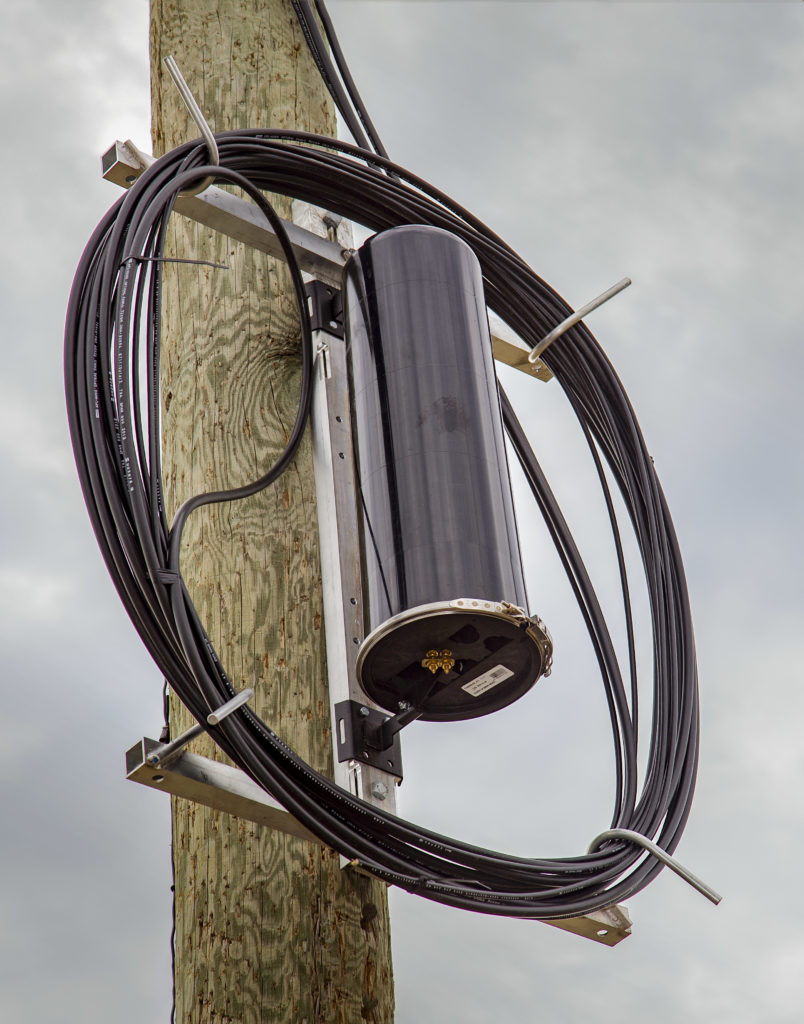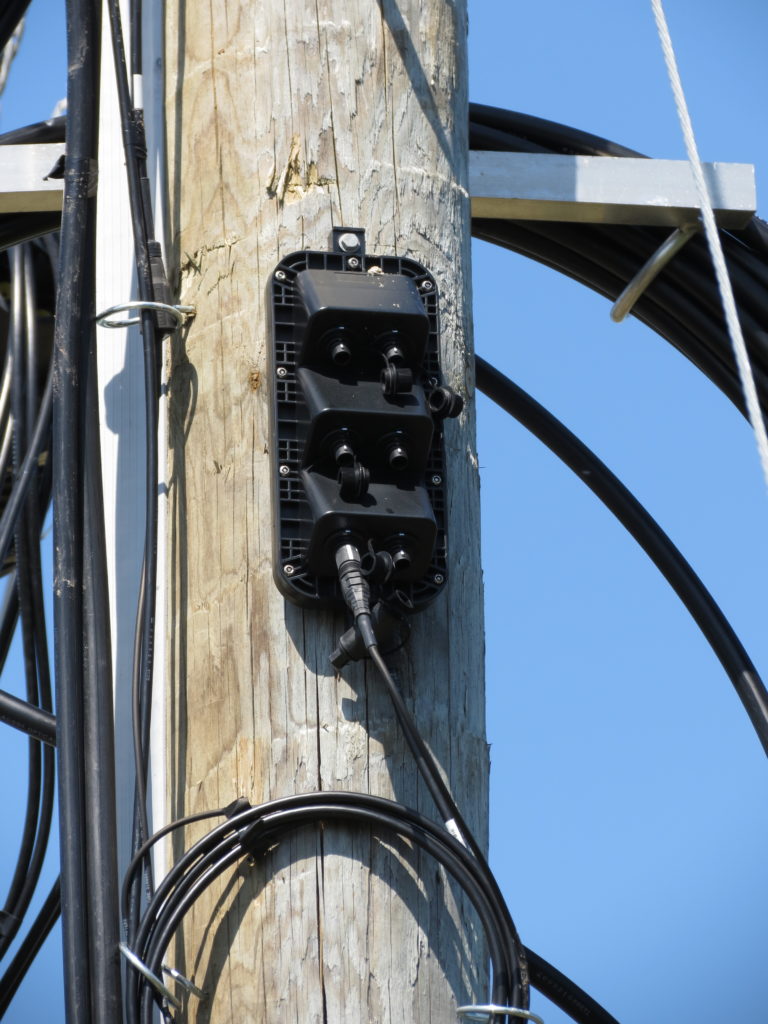It’s time to address another common misconception in the Truestream fiber world – and that is…. “You’ve forgotten me!” or “You’ve connected my neighbor but not me.”
First up – “You’ve forgotten me!”
This remark is generally brought up during the mainline construction process. We know it is exciting to see work begin, and you will start to see new equipment on some of the electric poles. You may see things like this:

Slack Storage and Splice Case

Multiport Terminal
or this
Fiber is often referred to as future proof, and we want to make sure our network infrastructure has room for growth as well. Slack storage helps account for future growth and construction – if we need to move a pole, or there is an issue with the fiber line itself, we have that extra fiber line to use. The splice case is where two pieces of fiber meet and are connected. While this is exciting to see on the poles, it is not necessary on every pole – so don’t worry if the pole closest to your location doesn’t look like this.
The multiport terminal also plays an important role in future growth. The multiport serves in connecting your dedicated fiber line from the mainline to your home (the drop). Each has a port designated for existing customers served off that section of mainline fiber, as well as extra ports, for potential future customers. A multiport may not be on the pole closest to you, but there is likely one within 2,500 ft. of your location.
Up next – “You’ve connected my neighbor but not me.”
Chances are, you and your neighbor don’t have the exact same home, property size, and landscaping as one another, which means each construction-to-the-home we encounter is different.
Construction-to-the-home types:
- Overhead
- Construction is usually less complex.
- One crew required.
- Underground – Trenching
- Usually easier than boring underground.
- Used when there are minimal objects within the fiber path.
- Two different crews required – one to install the orange conduit, one to bring the fiber from the mainline, through the conduit, to your location.
- Underground – Boring
- Usually more time and labor-intensive than trenching underground.
- Used when immovable objects are within the fiber path.
- Two different crews required – one to install the orange conduit, one to bring the fiber from the mainline, through the conduit, to your location.
Each type of construction has a different crew. If your neighbor’s underground can be trenched in, while your project requires boring, those are two different types of crews, and your neighbor may have construction done before you – we won’t forget you though!
Other important factors include registration, returning the paperwork, and the status of the area.
Construction and Connecting Areas:
Once the registration is complete and the documents are returned and processed, your job moves along through the necessary construction steps. In an ideal world, it makes sense to build to everyone on your road at the same time. In reality, we complete an average of 500 underground jobs a month. Crews begin building to homes on the same road as paperwork is returned, so timing may be different for each location.
Active Areas:
We have already built the network in your area and the construction-to-the-home will likely be delayed. Our crews are primarily working in other areas, but they will get to you!
We know you are anxious, and we are excited to bring Truestream to your door. While we cannot tell you the exact time our crews will be at your location, we do email you updates as you move through the construction-to-the-home process, so keep an eye out for those. Thank you for your patience!

